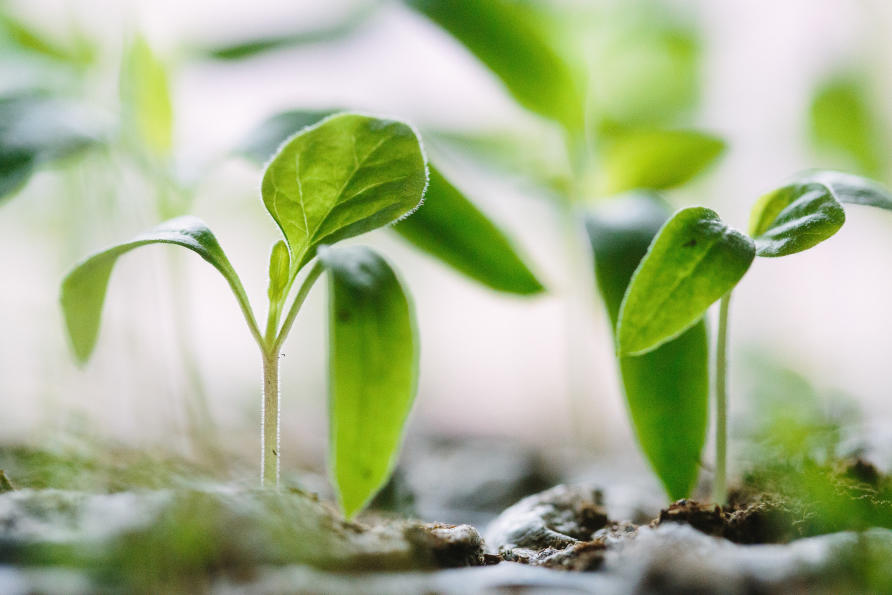Melbourne, Australia
June 7, 2017
To a child, soil is just dirt – a home for worms. To a gardener, soil is a collection of organic matter and nutrients. But to plants, soil is a hotbed of chemical activity. And plants don’t just observe, they actively participate in this activity.
Plants release chemicals into the soil, called exudates, that tell microbes to turn on or turn off certain chemical processes. Scientists are beginning to understand these signals and are hoping to exploit them to improve the efficiency, sustainability and environmental impact of the trillion dollar agricultural industry.
The three main nutrients plants need to grow are carbon, nitrogen and phosphorus. A plant’s carbon needs come from air in the form of carbon dioxide, but the nitrogen and phosphorus needs come from the soil, and often nitrogen is the element in shortest supply naturally – and so to increase their yields, farmers add nitrogen to the soil.

Plants have a finely balanced relationship with soil, depending on it for vital resources. Picture: Pexels
Artificial nitrogen fertiliser is an essential component of an agricultural system that feeds more than 7 billion people, but it comes with a huge environmental cost. As the population grows, and as feeding habits change to more meat-based diets, nitrogen pollution looks set to become even more of a problem.
Combatting nitrogen pollution
“The extent to which we’ve meddled with the nitrogen cycle globally is astonishing,” says Professor Herbert Kronzucker, head of the University of Melbourne’s School of BioSciences.
“210 million tonnes of nitrogen per year are taken from the atmosphere and turned into a solid form of nitrogen through human activities. And most of this ends up as fertiliser in agricultural soil.
“But less than half of this can actually be captured by plants. The rest is lost to the atmosphere as nitrogen gas or the greenhouse gas nitrous oxide, or leaches into waterways where it is a major pollutant.

Save our soils: Why dirt matters
Read more
“In the US, more than half of all lakes are badly impacted by too much nitrogen or phosphorus.”
But what if instead of adding more and more nitrogen to the soil, we help plants to better use the nitrogen that’s already there?
Professor Kronzucker and his colleagues at the University of Toronto, Laval University and the Chinese Academy of Sciences are looking for crops that communicate with the soil in a way that reduces their nitrogen requirements.
“We became interested in the relationship between chemicals from plants and the impact these have on soil microbes,” says Professor Kronzucker.
Human meddling
Nitrogen takes many chemical forms. The most useful forms for plant growth are nitrate (NO3-) and ammonia (NH3). Chemical processes in the soil transform nitrogen between these and other forms.
One example is a process called nitrification, which turns ammonia into nitrate. Nitrate is problematic in the soil because, while plants love it, it doesn’t stick around like ammonia does. It tends to dissolve in water and is washed out of the soil through rain and groundwater. Also, soil microbes turn nitrate into nitrogen gas, which is useless to plants.
All of these processes are reversible, and eventually nitrogen gas is returned to the soil through another microbial process called nitrogen fixation, but this process is too slow for industrial agricultural systems. Farmers have to keep adding more and more nitrogen, and usually this is in the form of artificial nitrogen fertilisers.
 A tractor applies nitrogen fertiliser to corn crops. Picture: Wikimedia
A tractor applies nitrogen fertiliser to corn crops. Picture: Wikimedia
These fertilisers are produced using an energy intensive industrial process that ‘fixes’ nitrogen gas by turning it into ammonia. This process, called the Haber-Bosch process, was a major factor in the Green Revolution that began in the 1960s and now provides food for more than 7 billion people.
In recent years, human activity has more than doubled the amount of nitrogen entering the Earth’s soil. And half of this additional nitrogen is wasted. But Professor Kronzucker says it doesn’t have to be this way.
Plants that grow in areas with low or intermittent nitrogen availability produce exudates that can block or enhance soil nitrogen transformations to improve nitrogen take-up when soil nitrogen availability is low.
The potential of plant exudates
Professor Kronzucker first began studying how plant exudates interact with soil nitrogen chemistry in the forest trees of Canada. But he has since become more interested in the way this interaction works with the world’s major crop plants.
Last year his group published their research into plant exudates from rice.
“Rice feeds three billion people, but it had not been investigated for its plant exudates,” says Professor Kronzucker.
 The research team found rice naturally inhibits nitrification. Picture: Pixabay
The research team found rice naturally inhibits nitrification. Picture: Pixabay
They found that all strains of rice they tested had exudates that could impact soil nitrogen.
“This is a paradigm shift. Wherever we look we find something,” says Professor Kronzucker.
The team then set about reviewing all existing studies into plant exudates in rice, wheat and maize. They were particularly interested in chemicals that specifically inhibit nitrification, the process that turns ammonia into nitrate.
This work is published in Nature Plants.
They found that very little is known about these biological nitrification inhibitors (BNIs) in root exudates from wheat and maize, the two biggest global crops after rice. In fact, nothing is known at all about BNIs in maize.
From his experience with rice, Professor Kronzucker thinks that these exudates will be found in wheat and maize, we just need to look for them.
As we gain a better understanding of how plants talk to the soil, these discoveries could lead to new farming techniques, artificial soil additives, or genetic modification to produce crop strains that can limit nitrogen loss. However, Professor Kronzucker says there is “enormous potential” in simply screening existing cultivars of rice, wheat and maize for “nitrogen superstars”.
 Nitrogen pollution: Forgotten element of climate change
Nitrogen pollution: Forgotten element of climate change
Read more
“If you do the screening job well with the kinds of genotypes that exist, you don’t have to look at genetic modification,” he says.
A new Green Revolution
Professor Kronzucker is not surprised that root exudates from rice, wheat and maize are so poorly understood. In developed countries, nitrogen fertiliser is relatively cheap and there has been little incentive for farmers to spend time or effort to reduce their use of fertiliser. Therefore, there has been little incentive, or funding, for research to assist in this. Professor Kronzucker thinks that this will change.
“Now we have carbon caps – we have ways of reducing carbon emissions. We need similar ways to reduce nitrogen emissions. Good practice should be rewarded, and bad practice should be penalised.”
He hopes this will lead to a new Green Revolution.
“Since the onset of the Green Revolution in the 1960s we’ve seen phenomenal success in yield. But because fertilisers were so readily available, most cultivars were developed in systems with high nitrogen and high phosphorus, not under nutrient limitation.
“Now there is a shift towards cultivars that are nutrient efficient. In some parts of the planet farmers do this by necessity, they don’t have a choice. In Africa it’s typical to work in nutrient limited conditions.”
Professor Kronzucker says that places like Africa is where the “nitrogen superstars” will be found.
“In these places there are a lot of treasures that farmers have selected.”